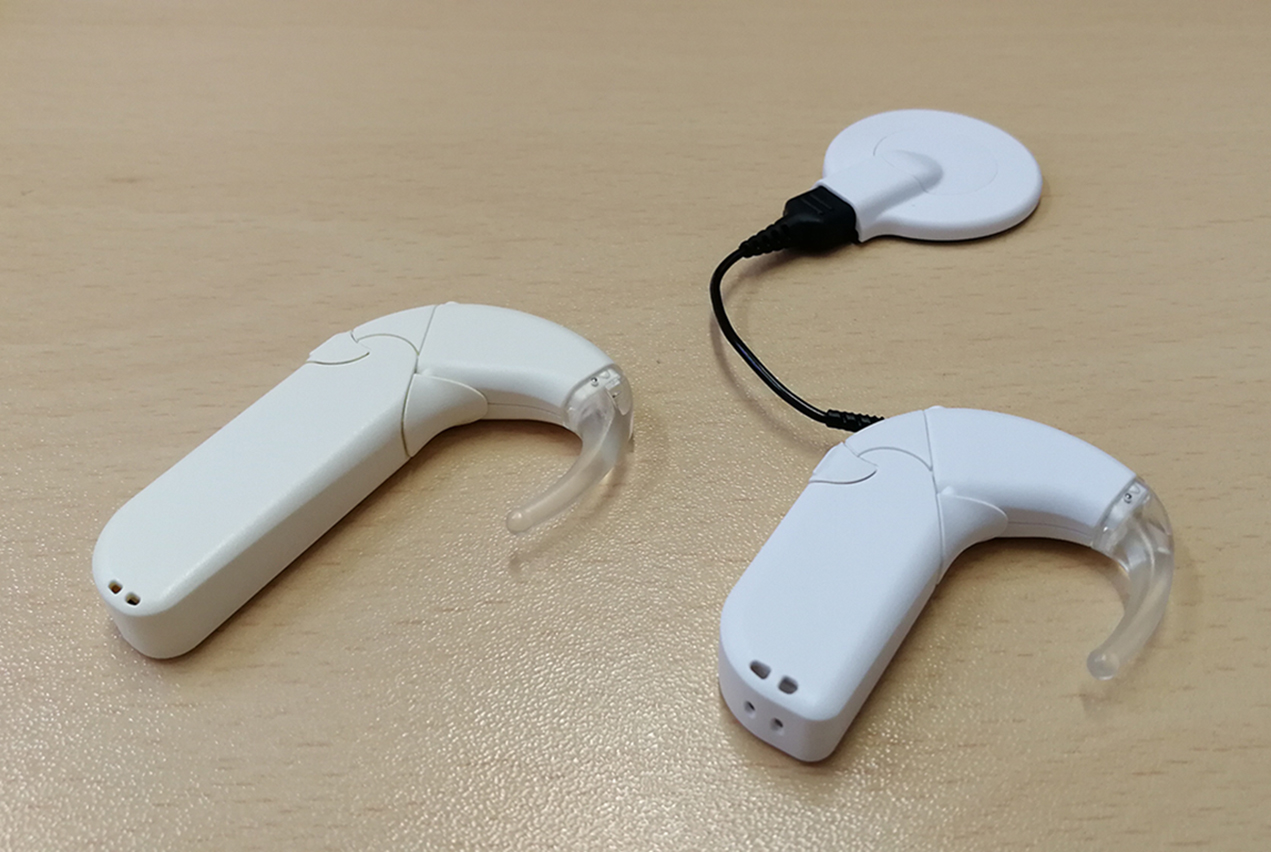When Ray Goldsworthy, PhD, was just 13, he contracted spinal meningitis. Antibiotics saved his life but destroyed the cells in his inner ears responsible for processing sound.
“Within the span of one to two weeks, I went from hearing normally to being completely deaf,” said Goldsworthy, an associate professor of research otolaryngology – head and neck surgery at the Keck School of Medicine of USC.

Raymond Goldworthy was one of the first children in the United States to receive a cochlear implant in 1988 and went on to become a scientist dedicated to helping the hearing impaired. (Photo/Ricardo Carrasco III)
A year later, in 1988, he became one of the first children in the United States to receive a cochlear implant through a pediatric trial.
While cochlear implants restore partial hearing, they can’t compete with the body’s natural hearing ability. Listening to music can be especially frustrating because tunes sound muffled and the implant makes it difficult to identify individual instruments or vocalists.
What is a cochlear implant?
Since then, Goldsworthy has dedicated his scientific career to helping the hearing impaired. Now, with the help of a $2 million grant from the National Institutes of Health (NIH), he is launching a research project aimed at helping those with cochlear implants regain their appreciation for music.
The grant is part of $20 million the NIH has awarded to support the Sound Health Initiative, which investigates the impact of music on the brain. He is one of two USC professors to receive such a grant.
Goldsworthy’s study will examine the role pitch perception plays in music comprehension. The ability to determine pitch — to distinguish if one sound is higher or lower than the other — is severely limited in people with cochlear implants and a big reason that music is hard for them to hear. Goldsworthy plans to help subjects regain this ability through training software he has developed. He will also investigate new ways of encoding improved pitch into the electrical stimulation patterns of the cochlear implant — this stimulation is how sound is recognized — and use brain imaging to understand the changes in the brain that occur with pitch training.
The result, Goldsworthy hopes, is that the participants in the study will gain a greater enjoyment of music.
If Goldsworthy is any example, they certainly will. Before losing his hearing, he was a drummer in a punk band and a big fan of rock and roll. Over the years, he has used the techniques he will test in the study to vastly improve his own sense of pitch. Today, he enjoys all types of music, from his childhood favorites of rock and punk to classical, world and jazz.
“I know I’m not alone,” he said. “With a little work and some help, all cochlear implant wearers can rediscover music and learn to love it again.”
Goldsworthy is currently looking for people with cochlear implants to enroll in the study. Anyone interested can reach him at bionicear-l@usc.edu.
— Alison Rainey


